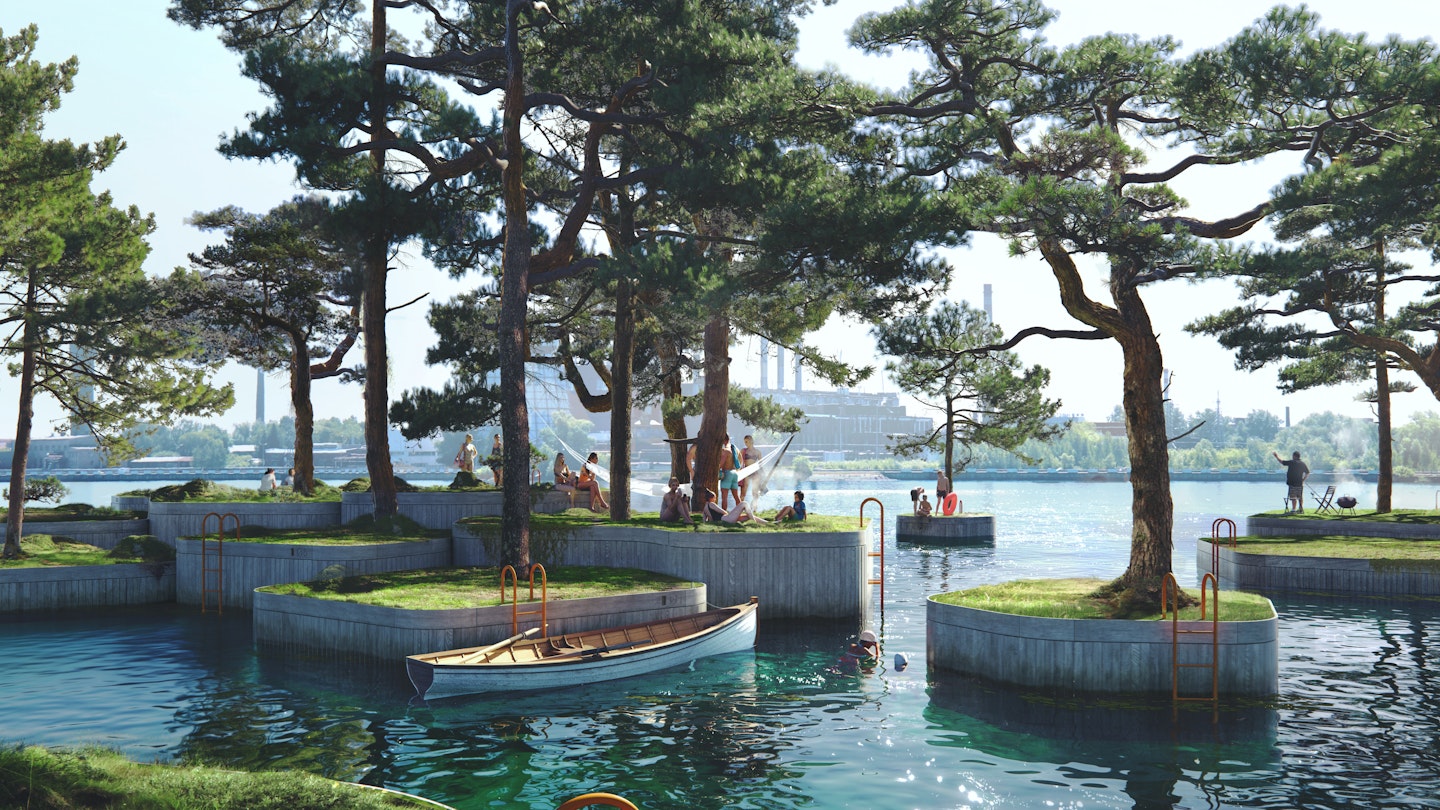Designers in Copenhagen have unveiled plans for a “parkipelago” in the city centre, a network of floating parks that will be free for anyone to use, catering to boaters, fishermen, kayakers, stargazers, and swimmers.
The Danish capital regularly ranks high on the lists of the world’s happiest and healthiest cities. Although there are many reasons for this, such as a high standard of living and a great work-life balance, it’s evident that sustainable urban planning and design contribute significantly; whether it be the city’s extensive network of cycle routes, urban waterways clean enough to bathe in, or the fact that 83% of the population lives within 300m of a green space.

Consequently, there will soon be a new way for locals to engage with their city thanks to the Copenhagen Islands project. Designed by Australian architect Marshall Blecher and Danish design studio Studio Fokstrot, this not-for-profit initiative will introduce a network of small floating parks made from sustainably sourced and recycled materials, launching in the city’s harbours.
The first of the islands, known as CPH-Ø1, made its debut in 2018 as a 215 sq ft dock. Studio Fokstrot commented that the park provided a changing green space for visitors, “moving from place to place, hosting part of a photography exhibition, a series of talks and many seaside picnics.” Due to its popularity, there are plans to launch three more islands this year, with more to come in 2021.
The islands will be available for public use and can accommodate various activities such as safe swimming zones, saunas, gardens, sail-in cafés, and even floating urban farms. Recently, Copenhagen has seen a significant increase in kayaks, sailors, swimmers, GoBoaters, tourists, and fishermen in the harbour, so the islands aim to cater to a variety of needs.

Moreover, using traditional wooden boat building techniques, the islands will be handcrafted in the city’s boatbuilding yards and planted with endemic trees and grass species. In alignment with sustainable practices, the islands will be moved seasonally between “under-utilised and newly developed parts of the harbour,” allowing for an equitable distribution of visitors and a chance to rejuvenate various locations when necessary.
The project, supported by the city council, received the Taipei International Design Award for public space and accolades for social design. It was also a finalist in the Beazley Design Prize at the London Design Museum and has recently been recognized as a finalist in the Danish Design Prize.





